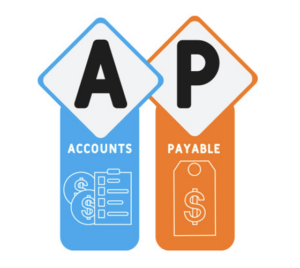Sustainability is not just a trend anymore, it is a necessity in today’s world. Businesses are constantly seeking ways to lessen their environmental impact without sacrificing productivity and profits. A solution capable of driving sustainability goals is Accounts Payable (AP) Automation. Through removing paper use, waste reduction, and increased efficiency, AP automation is key to building a greener future.
MORE NEWS: Phoenix bucket list: 25 things you must do
What is Accounts Payable Automation?
Accounts Payable Automation is the process of digitizing and automating invoice processing, approvals, and payments. Instead of handling paper invoices and manually processing payments, businesses use software to manage the entire AP workflow electronically. This not only speeds up the process but also reduces errors and improves cash flow management.
How AP Automation Supports Sustainability Goals

Reduces Paper Waste
One of the most significant ways AP automation helps businesses go green is by eliminating paper usage. Traditional AP processes involve paper invoices, checks, receipts, and other documents, leading to massive paper waste. By switching to a digital system, companies can:
- Reduce the need for printing, storing, and shredding paper invoices.
- Decrease deforestation and carbon footprint associated with paper production.
- Improve document management without the need for physical storage.
Cuts Down on Carbon Footprint
A manual AP process requires physical transportation of invoices, checks, and other financial documents. Whether it’s mailing invoices or transporting checks to vendors, these activities contribute to carbon emissions. With AP automation:
- Businesses can send invoices and payments electronically, reducing fuel consumption from transportation.
- Remote approval workflows eliminate the need for physical meetings and commuting.
- Digital payments reduce reliance on postal services, lowering emissions related to mail delivery.
Lowers Energy Consumption
Maintaining and storing hard copies of paper invoices means wasting office space and utility-consuming storage cabinets. And you need electricity to print, scan, and copy documents. Through AP automation, businesses can reduce energy consumption as follows:
- Removing the requirement for hard-copy storage, and lowering office energy consumption.
- Reducing use of printers, scanners and photocopiers.
- Established cloud-based solutions designed to maximize efficiency
Promotes Sustainable Vendor Partnerships
With automated AP processes, businesses can monitor vendor sustainability practices more effectively. Companies can prioritize working with suppliers that follow eco-friendly practices, such as paperless invoicing and green energy use. AP automation also helps businesses:
- Track and analyze spending patterns to identify sustainable vendors.
- Ensure compliance with environmental regulations and reporting.
- Reduce unnecessary purchases and improve budgeting for eco-friendly initiatives.
Reduces Costs and Improves Financial Efficiency
Sustainability is not just about the environment; it is also about creating long-term financial stability. AP automation allows businesses to operate more efficiently by reducing manual errors, avoiding late payments, and improving financial planning. With automated workflows, businesses can:
- Save money on paper, printing, and storage costs.
- Reduce manual labor hours, allowing employees to focus on higher-value tasks.
- Optimize cash flow management with real-time insights and analytics.
Enhances Compliance and Reduces Fraud
Many sustainability efforts require regulatory compliance and accurate reporting. With AP automation, businesses can maintain a secure and transparent financial system. Automated systems help in:
- Preventing duplicate payments and invoice fraud.
- Ensuring accurate financial records for sustainability audits.
- Reducing errors and improving accountability in financial transactions.
Implementing AP Automation for a Sustainable Future
Adopting AP automation is a step-by-step process that businesses can integrate seamlessly. Here are a few steps to get started:
Evaluate Current AP Processes: Assess the existing AP workflow and identify areas where paper and manual processes can be eliminated.
Choose the Right AP Automation Software: Select a platform that aligns with the company’s financial and sustainability goals.
Train Employees: Ensure that employees are well-versed in using the new system to maximize efficiency and effectiveness.
Encourage Digital Invoicing Among Vendors: Work with suppliers to transition to digital invoicing and payments.
Monitor and Improve: Continuously track sustainability metrics, such as paper reduction and carbon footprint, to optimize the system over time.
Conclusion
Sustainability is not just a nice to have it’s a business imperative. Although simple, accounts payable automation itself is a powerful tool for helping businesses achieve sustainability goals while simultaneously driving efficiency, reducing costs, and enhancing financial control. Automation, by removing paper waste, reducing carbon emissions, minimizing energy consumption, and enabling the purchasing of vendors aligned with an organization’s green initiatives, is a critical partner in creating a greener, more sustainable, future.
With AP automation, businesses can do this while also boosting their bottom line and going green. Overall, this shift towards digital financial processes is beneficial to businesses as well as the planet.




